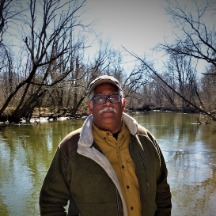What happens to a dream deferred?
Does it dry up
Like a raisin in the sun?
Or fester like a sore--
And then run?
Does it stink like rotten meat?
Or crust and sugar over--
like a syrupy sweet?
Maybe it just sags
like a heavy load.
Or does it explode?
-Langston Hughes
Now, he was Doctor William Lane Watkins, age 23, man with a plan and a future assured. After all, he was on equal footing with all the other graduates and with wit and hard work, he, too, would be able to establish a flourishing medical practice in Massachusetts. This is what he had dreamed of and worked for so arduously.
“We present a class of thirty-one, whose names are before you, upon whom is to be conferred the medical degree of the university…They all go forth bearing the respect of the Faculty and earnest wishes for their prosperity and success…”
-I.T. Talbot, Dean of the Faculty, Boston University School of Medicine, March, 1876
Watkins enrolled in the very first class at Boston University School of Medicine (BUSM) in November, 1873. Established when Boston University merged with the New England Female Medical College to become the first accredited, co-educational, homeopathic medical school in the United States, BUSM presented its students with a demanding course of study. Watkins accepted the challenge.
Very shortly before he was to begin his second year, his mother, Susan M. Bowie Watkins, died on September 27, 1874 in childbirth. She was only 44 years old. The city clerk had simply written “heart” as the cause of death. On a separate line, however, there was a record of “[__________] Watkins, still born.”
While grieving his mother’s sudden death, Watkins returned to medical school for the 1874-75 academic year according to plan. All records about Watkins’ life as a medical student have been lost, except one, which lists his thesis topic - “Jaborandi.” His intense study of the medicinal properties of an herb may have been a surprise to some, but likely expected and encouraged by the faculty, notwithstanding that homeopathy was quite controversial at the time.
After graduation, Doctor Watkins found himself pasting broadsides on fence posts and barn sidings to make a living. Rather than being applauded, he was not trusted to bring his talent, skills, and knowledge as a medical professional to his community to make a difference. He was rejected - his credentials questioned; his capabilities prejudged. He suddenly became a stranger.
We don’t know how, but after his graduation, society discovered that decades earlier, sometime early in 1852, Susan M. Bowie married William H. Watkins. She was a mulatto, formerly enslaved by Thomas Bowie, a member of a prominent Maryland family. By 1860, the Bowies were described as having the largest holding of enslaved people in Prince George’s County, Maryland and probably the state.
William H. was a White man, who had plans to start a new life in Massachusetts. While traveling north, the couple was forced to stop in Baltimore, where William Lane, their first son and future doctor, was born on November 26.
To the naked-eye, the Watkins were a typical White family. By all appearances, they had all the trappings of a White family, including a dark-skinned maid. After settling in New Bedford, Massachusetts in the early 1860’s, the census takers, both in 1865 (state census) and in 1870, identified William H. Watkins, City Messenger; Susan M. Watkins, “keeping house;” and each of the Watkins children as White.
Doors closed “after they found out that he wasn’t White,” his son, Harry Brooke Watkins recounted in an interview with Donald Shomette and Fred Tutman, March, 1998.
David Shomette is the author of several books including Lost Towns of Tidewater Maryland. Fred Tutman is one of the longest serving riverkeepers in the Chesapeake region and the only African American riverkeeper in the United States.
Dr. Watkins would later open a medical practice in Queen Anne, MD and teach at the Mount Nebo Colored (Elementary) School.
Tales from Historic Mount Nebo Series is an ongoing series of stories about people connected to the historic Mount Nebo African American Episcopal Church, Cemetery, and/or Colored School in Bowie, Maryland. Click the link below for the original story and for links to this and other stories in the series.
Black Lives Matter in Death, Too – Mt. Nebo AME Preserves Historic Cemetery







